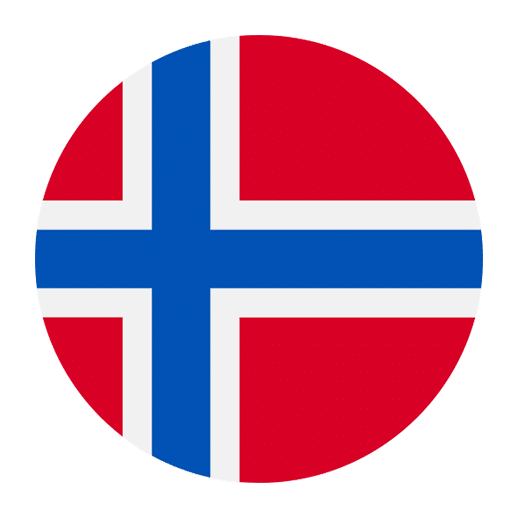In the journey of learning a new language, nuances between similar-looking words can often trip up even the most dedicated learners. Norwegian, a language with its own unique charm and complexity, is no exception. One pair of words that often causes confusion is “skje” and “skei.” These words may look quite similar at first glance, but they carry very different meanings. Let’s explore these two terms, delve into their usage, and understand how to use them correctly.
Understanding the Basics
Before diving into the intricacies, it’s essential to grasp the basic definitions of these words.
1. **Skje:** This word translates to “spoon” in English. It is a common noun used to refer to the utensil we use for eating or stirring.
2. **Skei:** On the other hand, “skei” means “skied” in English, the past tense of “ski.” This verb is associated with the action of skiing, a popular activity in Norway.
As you can see, the meanings of these words are worlds apart, despite their similar appearances. Understanding their definitions is the first step in mastering their usage.
The Noun: Skje (Spoon)
The word “skje” is a noun and is one of the everyday items you will encounter frequently. Here are some examples of how “skje” is used in sentences:
– **Jeg trenger en skje for å spise suppen.** (I need a spoon to eat the soup.)
– **Har du en teskje til teen min?** (Do you have a teaspoon for my tea?)
– **Vi har mistet alle skjeene våre.** (We have lost all our spoons.)
Notice that “skje” is used in various contexts involving eating or stirring. The word “skje” can be further classified into different types based on its usage, such as:
– **Teskje:** Teaspoon
– **Spiseskje:** Tablespoon
– **Dessertskje:** Dessert spoon
Understanding these variations will help you use “skje” more precisely in different culinary contexts.
The Verb: Skei (Skied)
“Skei” is the past tense of the verb “å ski,” which means “to ski.” Skiing is a significant part of Norwegian culture, and knowing how to talk about it in both the present and past tenses is crucial for effective communication. Here are some examples of how “skei” is used:
– **Vi skei hele dagen i går.** (We skied all day yesterday.)
– **Har du noen gang skei i alpene?** (Have you ever skied in the Alps?)
– **De skei ned den bratte bakken uten problemer.** (They skied down the steep hill without any problems.)
In these sentences, “skei” is used to describe past actions related to skiing. It’s important to note that the verb “å ski” follows regular conjugation patterns in Norwegian. Here’s a quick look at its conjugation:
– Present tense: **Ski** (I ski)
– Past tense: **Skei** (I skied)
– Present perfect: **Har skiet** (Have skied)
Pronunciation and Phonetics
One of the reasons “skje” and “skei” can be confusing is their pronunciation. While they may look similar, they sound quite different. Let’s break down their phonetics:
1. **Skje:** Pronounced as /ʃeː/. The “skj” combination produces a “sh” sound, similar to the English word “she.” The “e” is elongated, making it sound like “shay.”
2. **Skei:** Pronounced as /skæi/. The “sk” retains its hard “s” and “k” sounds, followed by a diphthong “ei,” which sounds like the English word “sky.”
Listening to native speakers and practicing these sounds can help you differentiate between the two words more effectively.
Common Mistakes and How to Avoid Them
Even with a good grasp of their meanings and pronunciations, it’s easy to mix up “skje” and “skei” in conversation or writing. Here are some common mistakes and tips to avoid them:
1. **Contextual Clues:**
– Always consider the context. If you’re talking about food or utensils, “skje” is the likely choice. If the conversation is about winter sports or activities, “skei” is more appropriate.
2. **Practice Sentences:**
– Create practice sentences for both words. Repetition helps solidify the differences in your mind. For example:
– **Jeg bruker en skje til å spise is.** (I use a spoon to eat ice cream.)
– **Jeg skei ned bakken i går.** (I skied down the hill yesterday.)
3. **Listening and Speaking:**
– Listen to native speakers and try to mimic their pronunciation. Engaging in conversations with native speakers can also help reinforce the correct usage.
4. **Writing Exercises:**
– Write short paragraphs using both “skje” and “skei.” This will help you get comfortable with their usage in different contexts.
Expanding Vocabulary
To further enhance your Norwegian language skills, it’s beneficial to expand your vocabulary around these words. Here are some related terms and their meanings:
1. **Related to Skje:**
– **Gaffel:** Fork
– **Kniv:** Knife
– **Bolle:** Bowl
– **Kopp:** Cup
2. **Related to Skei:**
– **Ski:** Ski
– **Skistaver:** Ski poles
– **Skibakke:** Ski slope
– **Skistøvler:** Ski boots
By expanding your vocabulary, you’ll be able to describe more specific scenarios and engage in more detailed conversations.
Cultural Context
Understanding the cultural context of these words can also provide deeper insights and make learning more meaningful.
1. **Skje and Norwegian Cuisine:**
– The word “skje” is deeply embedded in Norwegian cuisine and daily life. Traditional dishes such as “risengrynsgrøt” (rice porridge) and “fårikål” (mutton stew) are often enjoyed with a spoon. Knowing this word helps you navigate culinary experiences in Norway more comfortably.
2. **Skei and Norwegian Sports:**
– Skiing is not just a sport in Norway; it’s a way of life. Norway has a rich skiing history and has produced many world-class skiers. Understanding terms related to skiing, including “skei,” allows you to appreciate and participate in conversations about this important aspect of Norwegian culture.
Conclusion
Mastering the usage of “skje” and “skei” is a small but significant step in your Norwegian language learning journey. By understanding their definitions, pronunciations, and contexts, you can avoid common pitfalls and communicate more effectively. Remember to practice regularly, expand your vocabulary, and immerse yourself in the cultural nuances of these words. Happy learning!

